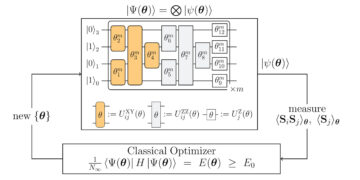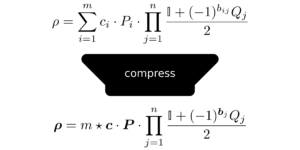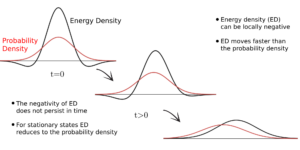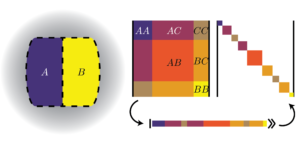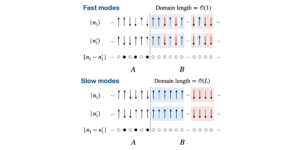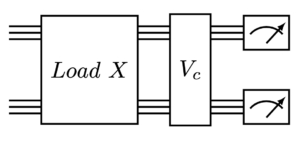1Institute for Nuclear Research, P. O. Box 51, H-4001 Debrecen, Hungary
2MTA Atomki Lendület Quantum Correlations Research Group, Institute for Nuclear Research, P. O. Box 51, H-4001 Debrecen, Hungary
Find this paper interesting or want to discuss? Scite or leave a comment on SciRate.
Abstract
In this paper we study the Platonic Bell inequalities for all possible dimensions. There are five Platonic solids in three dimensions, but there are also solids with Platonic properties (also known as regular polyhedra) in four and higher dimensions. The concept of Platonic Bell inequalities in the three-dimensional Euclidean space was introduced by Tavakoli and Gisin [Quantum 4, 293 (2020)]. For any three-dimensional Platonic solid, an arrangement of projective measurements is associated where the measurement directions point toward the vertices of the solids. For the higher dimensional regular polyhedra, we use the correspondence of the vertices to the measurements in the abstract Tsirelson space. We give a remarkably simple formula for the quantum violation of all the Platonic Bell inequalities, which we prove to attain the maximum possible quantum violation of the Bell inequalities, i.e. the Tsirelson bound. To construct Bell inequalities with a large number of settings, it is crucial to compute the local bound efficiently. In general, the computation time required to compute the local bound grows exponentially with the number of measurement settings. We find a method to compute the local bound exactly for any bipartite two-outcome Bell inequality, where the dependence becomes polynomial whose degree is the rank of the Bell matrix. To show that this algorithm can be used in practice, we compute the local bound of a 300-setting Platonic Bell inequality based on the halved dodecaplex. In addition, we use a diagonal modification of the original Platonic Bell matrix to increase the ratio of quantum to local bound. In this way, we obtain a four-dimensional 60-setting Platonic Bell inequality based on the halved tetraplex for which the quantum violation exceeds the $sqrt 2$ ratio.
► BibTeX data
► References
[1] H. S. M. Coxeter, Regular Polytopes (New York: Dover Publications 1973).
[2] J. S. Bell, On the Einstein-Poldolsky-Rosen paradox, Physics 1, 195–200 (1964).
https://doi.org/10.1103/PhysicsPhysiqueFizika.1.195
[3] N. Brunner, D. Cavalcanti, S. Pironio, V. Scarani, and S. Wehner, Bell nonlocality, Rev. Mod. Phys. 86, 419 (2014).
https://doi.org/10.1103/RevModPhys.86.419
[4] A. Tavakoli and N. Gisin, The Platonic solids and fundamental tests of quantum mechanics, Quantum 4, 293 (2020).
https://doi.org/10.22331/q-2020-07-09-293
[5] B. S. Cirel’son, Quantum generalizations of Bell’s inequality, Letters in Mathematical Physics 4, 93–100 (1980).
https://doi.org/10.1007/BF00417500
[6] B. S. Tsirelson, Quantum analogues of the Bell inequalities. The case of two spatially separated domains, J. Soviet Math. 36, 557 (1987).
https://doi.org/10.1007/BF01663472
[7] K. Bolonek-Lasoń, P. Kosiński, Groups, Platonic solids and Bell inequalities, Quantum 5, 593 (2021).
https://doi.org/10.22331/q-2021-11-29-593
[8] R. Cleve, P. Hoyer, B. Toner, and J. Watrous, Consequences and limits of nonlocal strategies, in 19th IEEE Conference on Computational Complexity p. 236. (2004).
https://doi.org/10.1109/CCC.2004.1313847
[9] J. F. Clauser, M. A. Horne, A. Shimony, and R. A. Holt. Proposed experiment to test local hidden-variable theories, Phys. Rev. Lett. 23, 880 (1969).
https://doi.org/10.1103/PhysRevLett.23.880
[10] A.J. Bennet, D.A. Evans, D.J. Saunders, C. Branciard, E.G. Cavalcanti, H.M. Wiseman, and G.J. Pryde, Arbitrarily loss-tolerant Einstein-Podolsky-Rosen steering allowing a demonstration over 1 km of optical fiber with no detection loophole, Phys. Rev. X 2, 031003 (2012).
https://doi.org/10.1103/PhysRevX.2.031003
[11] D. J. Saunders, S. J. Jones, H. M. Wiseman, G. J. Pryde, Experimental EPR-Steering using Bell-local States, Nat. Phys. 76, 845-849 (2010).
https://doi.org/10.1038/nphys1766
[12] T. Decker, D. Janzing, T. Beth, Quantum circuits for single-qubit measurements corresponding to platonic solids, Int. J. Quan. Inf. 02, 353 (2004).
https://doi.org/10.1142/S0219749904000298
[13] K. Jeong, J. S. Lee, J. T. Choi, S. M. Hong, M. G. Jung, G. B. Kim, J. K. Kim, and S. Kim, Single Qubit Private Quantum Channels and 3-Dimensional Regular Polyhedra, New Phys.: Sae Mulli 68 232-240 (2018).
https://doi.org/10.3938/NPSM.68.232
[14] Junseo Lee, Kabgyun Jeong, High-dimensional private quantum channels and regular polytopes, Communications in Physics 31, 189 (2021).
https://doi.org/10.15625/0868-3166/15762
[15] P. Kolenderski, R. Demkowicz-Dobrzanski, Optimal state for keeping reference frames aligned and the Platonic solids, Phys. Rev. A 78, 052333 (2008).
https://doi.org/10.1103/PhysRevA.78.052333
[16] M. Burrello, H. Xu, G. Mussardo, X. Wan, Quantum hashing with the icosahedral group, Phys. Rev. Lett. 104, 160502 (2010).
https://doi.org/10.1103/PhysRevLett.104.160502
[17] J. I. Latorre, G. Sierra, Platonic Entanglement, e-print arXiv:2107.04329 (2021).
https://doi.org/10.48550/arXiv.2107.04329
arXiv:2107.04329
[18] Y. Xiao, Z.-P. Xu, Q. Li, H.-Y. Su, K. Sun, A. Cabello, J.-S. Xu, J.-L. Chen, C.-F. Li, G.-C. Guo, Experimental test of quantum correlations from Platonic graphs, Optica 5, 718 (2018).
https://doi.org/10.1364/OPTICA.5.000718
[19] A. Acín, N. Gisin, and B. Toner, Grothendieck’s constant and local models for noisy entangled quantum states, Phys. Rev. A 73, 062105 (2006).
https://doi.org/10.1103/PhysRevA.73.062105
[20] M. Navascués, S. Pironio, and A. Acín, Bounding the Set of Quantum Correlations, Phys. Rev. Lett. 98, 010401 (2007).
https://doi.org/10.1103/PhysRevLett.98.010401
[21] T. Vértesi and K. F. Pál, Generalized Clauser-Horne-Shimony-Holt inequalities maximally violated by higher dimensional systems, Phys. Rev. A 77, 042106 (2008).
https://doi.org/10.1103/PhysRevA.77.042106
[22] M. Epping, H. Kampermann, D. Bruß, Designing Bell inequalities from a Tsirelson bound, Phys. Rev. Lett. 111 240404 (2013).
https://doi.org/10.1103/PhysRevLett.111.240404
[23] M. Epping, H. Kampermann, D. Bruß, Optimisation of Bell inequalities with invariant Tsirelson bound, J. Phys. A bf 47 424015 (2014).
https://doi.org/10.1088/1751-8113/47/42/424015
[24] T. Vértesi and K. F. Pál, Bounding the dimension of bipartite quantum systems, Phys. Rev. A 79, 042106 (2009).
https://doi.org/10.1103/PhysRevA.79.042106
[25] J. Briët, H. Buhrman, and B. Toner, A generalized Grothendieck inequality and nonlocal correlations that require high entanglement, Commun. Math. Phys. 305, 827 (2011).
https://doi.org/10.1007/s00220-011-1280-3
[26] M. Navascués, G. de la Torre, and T. Vértesi, Characterization of quantum correlations with local dimension constraints and its device-independent applications, Phys. Rev. X 4, 011011 (2014).
https://doi.org/10.1103/PhysRevX.4.011011
[27] A. M. Davie (unpublished note, 1984) and J. A. Reeds (unpublished note, 1991).
[28] A. Grothendieck, Résumé de la théorie métrique des produits tensoriels topologiques, Bol. Soc. Mat. São Paulo 8, 1–79 (1953).
[29] S. R. Finch, Mathematical Constants, ser. Encyclopedia of Mathematics and its Applications. Cambridge, UK: Cambridge University Press, 2003.
[30] J. L. Krivine, Constantes de Grothendieck et fonctions de type positif sur les spheres, Adv. Math. 31, 16 (1979).
https://doi.org/10.1016/0001-8708(79)90017-3
[31] P.C. Fishburn and J.A. Reeds, Bell inequalities, Grothendieck’s constant, and root two, SIAM Journal on Discrete Mathematics, 7, 48–56 (1994).
https://doi.org/10.1137/S0895480191219350
[32] T. Vértesi, More efficient Bell inequalities for Werner states, Phys. Rev. A 78, 032112 (2008).
https://doi.org/10.1103/PhysRevA.78.032112
[33] B. Hua, M. Li, T. Zhang, C. Zhou, X. Li-Jost, S.-M. Fei, Towards Grothendieck constants and LHV models in quantum mechanics, J. Phys. A: Math. Theor. 48, 065302 (2015).
https://doi.org/10.1088/1751-8113/48/6/065302
[34] P. Diviánszky, E. Bene, and T. Vértesi, Qutrit witness from the Grothendieck constant of order four, Phys. Rev. A, 96, 012113 (2017).
https://doi.org/10.1103/PhysRevA.96.012113
[35] P. Raghavendra and D. Steurer, Towards computing the Grothendieck constant, In Proceedings of the Twentieth Annual ACM-SIAM Symposium on Discrete Algorithms, 525 (2009).
[36] A. H. Land and A. G. Doig, An automatic method of solving discrete programming problems, Econometrica 28, 497–520 (1960).
https://doi.org/10.2307/1910129
[37] https://github.com/divipp/kmn-programming.
https://github.com/divipp/kmn-programming
Cited by
This Paper is published in Quantum under the Creative Commons Attribution 4.0 International (CC BY 4.0) license. Copyright remains with the original copyright holders such as the authors or their institutions.


